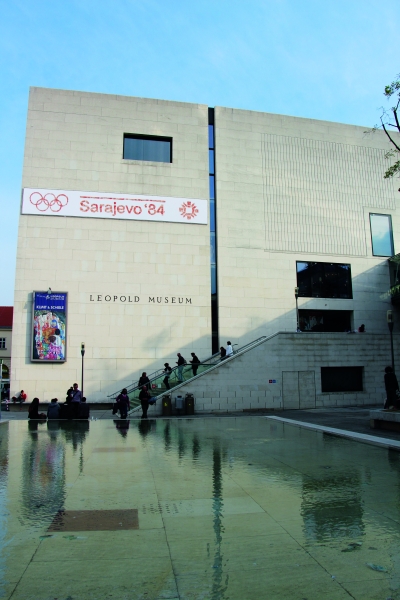And yet there was art! Austria 1914–1918
Leopold Museum, Vienna, 9th of May to 15th of September 2014

Marko Lulič: Sarajevo 1984
The assassination of the Austrian heir to the throne, Archduke Franz Ferdinand, on the 28th of June 1914 in Sarajevo was the fatal trigger of World War I. One hundred years on, the Leopold Museum is dedicating a comprehensive exhibition to the fate of Austrian artists who were active between 1914 and 1918.
The war experiences of Egon Schiele, Albin Egger-Lienz and Anton Kolig provide the starting point for the exhibition. »I am a soldier now and have just lived through the hardest 14 days of my life« Schiele wrote in 1915. During his military service he painted Russian prisoners of war as well as his superiors. Anton Kolig reported from the war zone in 1916: »I am painting in great distress«. Albin Egger-Lienz, meanwhile, pondered the »unyielding stride of eternal fate« on the Italian frontline. While war painters depicted the horrors of war, large-scale art exhibitions were organized in Austria and in neutral countries abroad. Even at the height of the war, Kolo Moser painted works of intense coloring. At the same time, Gustav Klimt worked on his female portraits, allegories and late Attersee landscapes. When Klimt died in February 1918, Schiele drew the artist on his deathbed. In October of the same year he captured his fatally ill wife Edith. Both succumbed that same month – shortly before the end of the war – to the Spanish Flu.
Selected works by contemporary artists from Italy, Romania, Russia and Serbia – the countries that Austria-Hungary fought on the frontlines during World War I – create a connection to the present. Presented in the exhibition are 200 works, 40 of which hail from the collection of the Leopold Museum, 30 from the Leopold Collection II and 130 from public and private Austrian and international lenders. The historical objects are complemented by contemporary art interventions.


